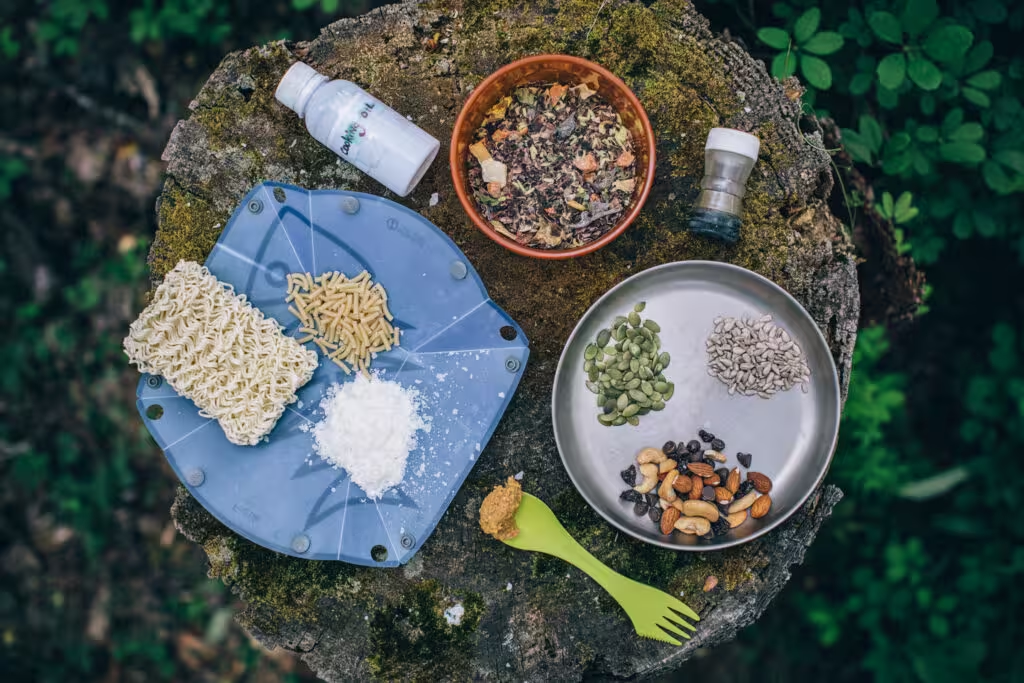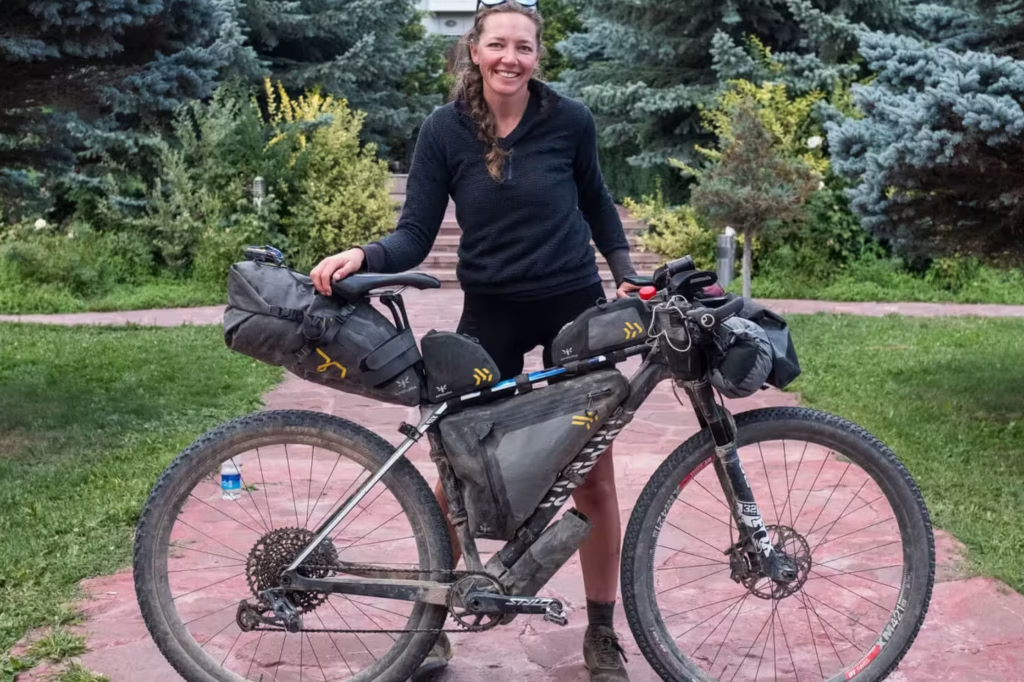What is Bikepacking?
At its core, bikepacking is about strapping camping gear to your bicycle and heading out for multi-day adventures. Unlike traditional bicycle touring, which typically relies on panniers and paved roads, bikepacking emphasizes traveling light and often ventures onto unpaved surfaces, including gravel roads and single-track trails. This approach allows riders to explore remote areas while maintaining better bike handling on rough terrain.
Essential Gear for Female Bikepackers
While most bikepacking gear is gender-neutral, some considerations are particularly important for women. The foundation starts with selecting the right bike and ensuring a proper fit. Women-specific bicycle geometry can significantly improve comfort on long rides, though many women also find success with unisex frames when correctly sized.
Saddle Selection
A high-quality women’s-specific saddle can be the difference between a comfortable adventure and a painful experience. Popular options include models from Specialized Power and Terry, but saddle preference is highly personal—testing different options is key.
With being in the saddle all day can come some challenges… one of those being saddle sores. While they are extremely common, and annoying, they can be prevented by using products such as Chamois Butt’r, and similar items. Chamois butt’r is a cream that is specifically designed to prevent chafing and friction by making a smooth barrier between your skin and your clothing.

Clothing Considerations

Opt for cycling shorts or bibs designed specifically for women, as they provide appropriate pad placement and a better fit. Many brands now offer bibs with convenient features like drop-tail designs or side clasps for easier bathroom breaks.
Find Your Perfect Ride Outfit! → Discover the must-have bikepacking apparel for ultimate comfort and performance.
Female-Specific Considerations
Beyond gear, certain aspects of bikepacking require extra planning for women.
Hygiene on the Trail
Maintaining hygiene during multi-day trips is essential. Pack biodegradable wet wipes, a menstrual cup or period products, and quick-dry underwear. Cycling shorts with removable liners can also help with hygiene on longer rides.
Sports Bra Selection
Choose a sports bra that balances support, comfort, and quick-drying capabilities. Having a dedicated sleeping sports bra can enhance comfort during overnight trips.
Safety and Navigation
Safety is a top priority for all bikepackers, but women may face additional concerns when traveling solo.
- Carry a satellite communication device like a Garmin inReach for emergency contact in remote areas.
- Share your route with trusted friends or family, including expected check-in times.
- Use multiple navigation tools, including GPS devices, smartphone apps like Komoot or RideWithGPS, and traditional maps. Always have a backup plan in case of electronic failure.
Planning Your First Trip
Starting small and building up gradually is key to a successful bikepacking experience.
Beginner-Friendly Tips
- Test Your Setup: Try a one-night trip to a nearby campground to refine your packing strategy.
- Join a Group Ride: Organized bikepacking events cater to beginners and offer a great learning opportunity.
- Plan Your Route Thoughtfully:
- Consider your fitness level and riding experience.
- Account for daylight hours and water sources.
- Identify camping options and emergency bail-out points.
Building Confidence
Confidence comes through preparation and experience. Before your first big trip, practice:
- Loading and unloading your bike with all gear.
- Riding a fully loaded bike in different conditions.
- Basic bike maintenance and repairs.
- Setting up and breaking down your camp efficiently.
- Using all your gear, including cooking equipment.
Helpful Resources
Taking a wilderness first aid course and a basic bike maintenance workshop can be invaluable. Many bike shops and outdoor organizations offer women’s-specific classes.
Essential Gear List
Bike Setup:
- Frame bag
- Seat pack
- Handlebar roll
- Top tube bag
- Additional storage as needed
Camping Equipment:
- Lightweight tent or bivy
- Sleeping bag rated for expected conditions
- Sleeping pad
- Headlamp
- Multi-tool
- Cooking system
Clothing:


- Cycling shorts/bibs. I personally prefer gravel bibs (as pictured above,) because they have lightweight pockets. This is extremely useful for ride fuel and snacks in an easy access place. Different companies have different setups on their gravel bibs (ex. more pockets, detachable rear strap for easy bathroom access, etc.)
- Moisture-wicking base layers
- Insulating mid-layer
- Waterproof/windproof outer layer
- Comfortable off-bike clothing
- Cycling shoes and camp shoes
Advanced Bikepacking Tips
As you gain experience, consider these strategies:
- Ultralight packing to reduce weight.
- Creative storage solutions for better gear distribution.
- Seasonal gear adjustments for varied weather conditions.
- Navigation techniques for challenging terrain.
- Food and water management for longer trips.
Seasonal Considerations
Each season presents unique challenges:
- Summer: Stay cool and manage sun exposure.
- Winter: Layer strategically and ensure weather protection.
- Spring/Fall: Pack versatile layers for temperature fluctuations.
Capturing the Adventure

Documenting your journey not only creates lasting memories but also inspires others. Consider:
- A lightweight camera or high-quality smartphone.
- Weather protection for electronics.
- Portable power solutions for extended trips.
Gear Maintenance
Regular maintenance ensures reliability on the trail:
- Clean and lubricate your bike frequently.
- Check and waterproof gear before trips.
- Wash and store technical clothing properly.
- Replace worn items as needed.
International Bikepacking
Planning a trip abroad? Keep these factors in mind:
- Research local cycling regulations.
- Plan for bike transport and storage.
- Learn basic bike-related phrases in the local language.
- Familiarize yourself with emergency response procedures.
Building a Bikepacking Community
Connecting with other bikepackers can provide inspiration, support, and companionship. Get involved through:
- Local cycling clubs and bikepacking groups.
- Online forums and social media communities.
- Women-specific cycling organizations.
- Bikepacking events and mentorship programs.
Nutrition and Recovery

Proper fueling and recovery are crucial for endurance and overall enjoyment.
Fuel Your Ride! → Discover what nutrition is best for female cyclists!
- Choose energy-dense, nutritious foods.
- Hydrate consistently, adjusting for climate conditions.
- Prioritize post-ride recovery with stretching and rest.
Fuel Your Ride, Speed Up Recovery! With the right nutrition and recovery strategies you can stay strong, ride longer, and recover faster. Discover the best fueling and recovery tips now!
Conclusion

Bikepacking is an incredible way to explore, challenge yourself, and connect with nature and a vibrant community of like-minded adventurers. While getting started may seem overwhelming, every expert was once a beginner. Start small, stay curious, and expand your comfort zone gradually.
The growing inclusivity of the bikepacking community means more women are shaping the sport’s future. Whether you’re dreaming of a weekend getaway or a cross-continental expedition, the most important step is to begin.
Share Your Adventure! → Tag us on Instagram with #RideLikeAGirl for a chance to be featured!